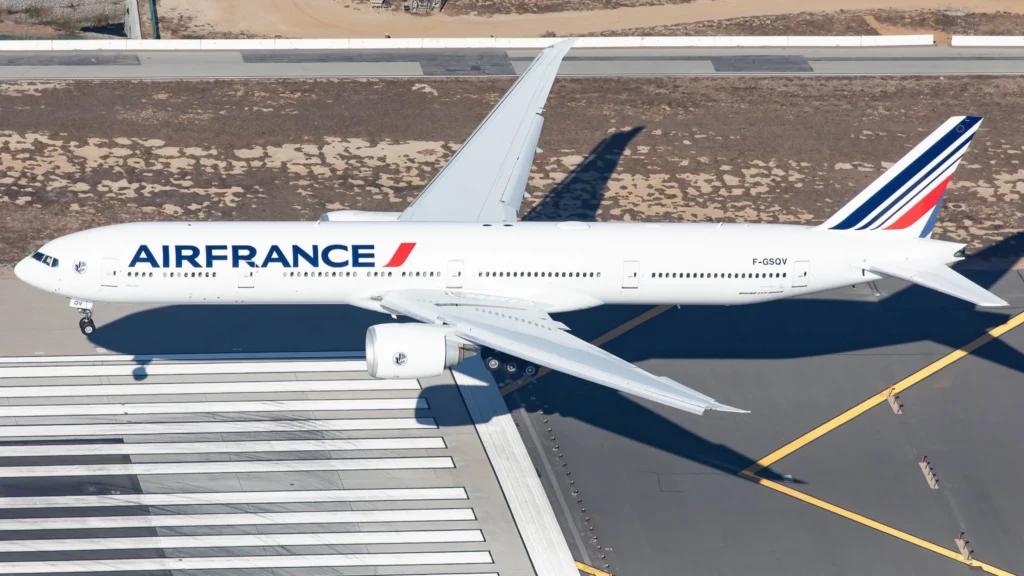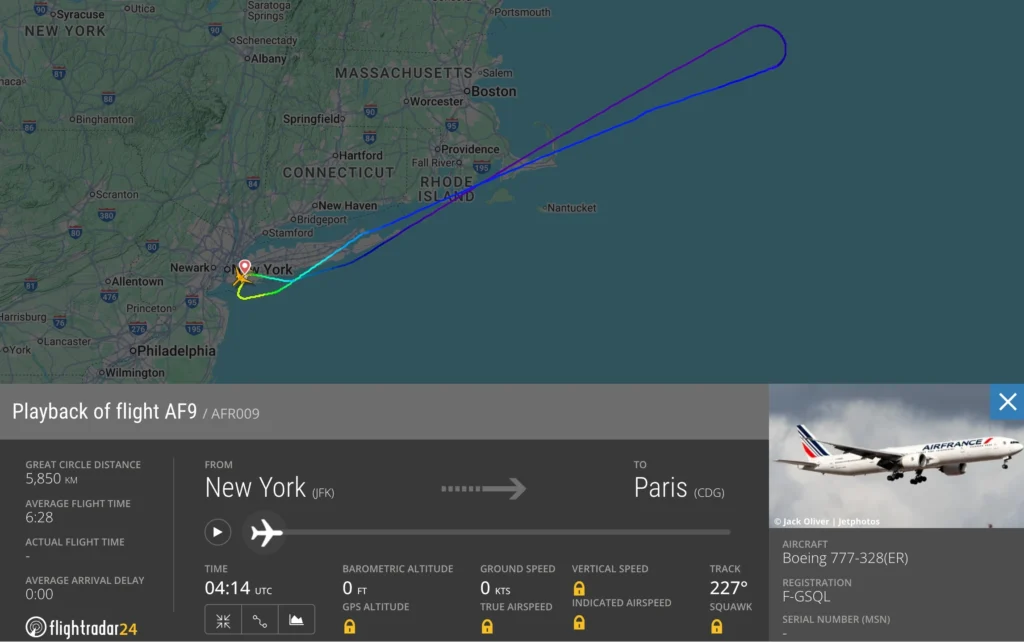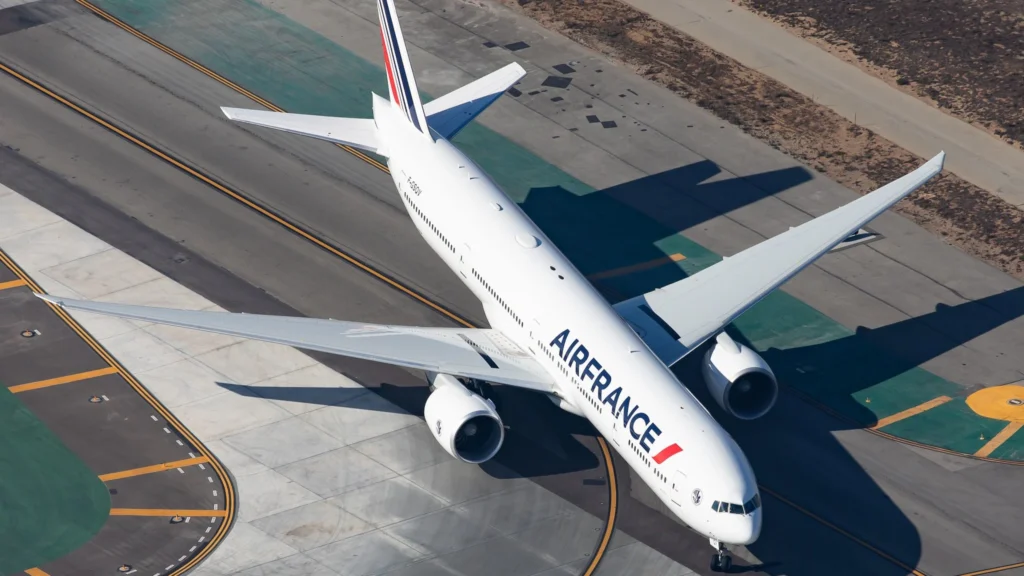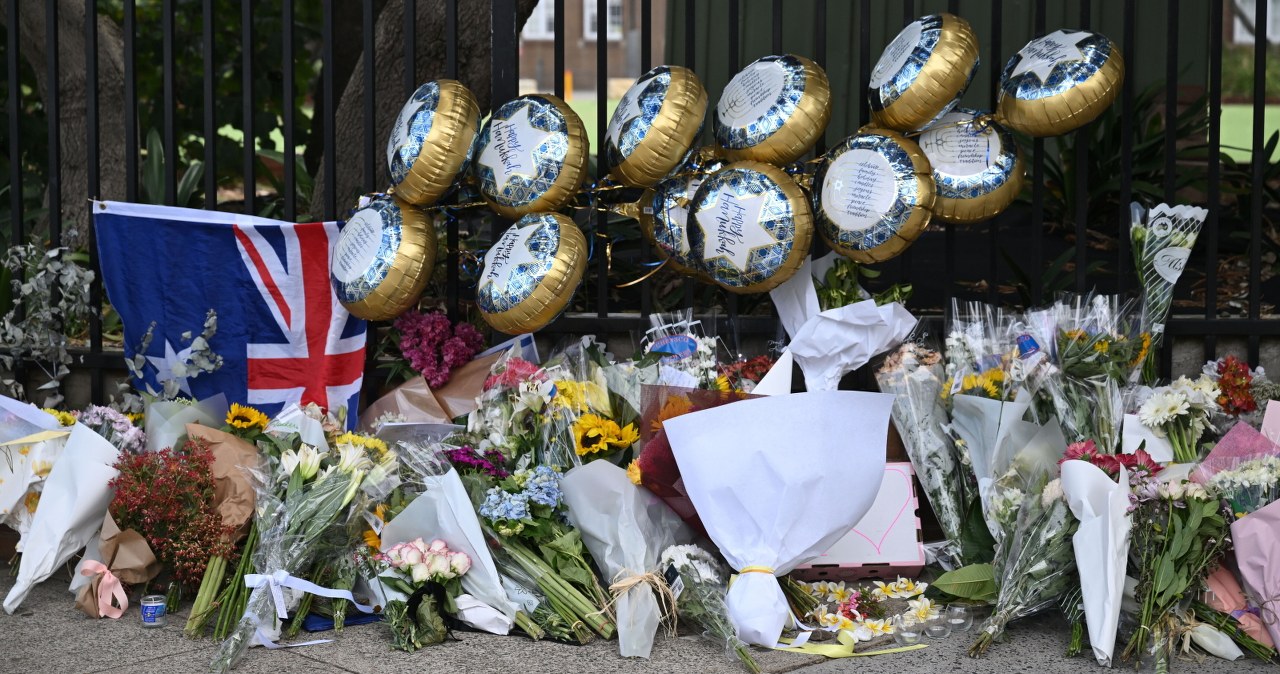
NEW YORK- Air France (AF) flight AF9 from New York (JFK) to Paris Charles de Gaulle (CDG) was forced to return shortly after takeoff due to an engine issue on its Boeing 777-300ER. The aircraft, registered F-GSQL, landed safely back at John F. Kennedy International Airport (JFK).
The flight was scheduled to depart late on August 18, 2025, with passengers bound for Paris (CDG). Instead, after less than an hour in the air, the crew decided to divert back to New York (JFK), citing an engine malfunction.
 Photo: Clément Alloing
Photo: Clément AlloingAir France New York Emergency
Flight AF9, operated by Air France (AF), departed JFK at 23:30 local time and began its transatlantic journey toward Paris (CDG).
Roughly 30 minutes into the flight, the crew reported an engine failure on the aircraft’s right wing. While the plane remained fully controllable, continuing over the Atlantic was deemed unsafe.
According to passenger accounts, the cabin crew initially illuminated the cabin and requested that the window shades be opened to allow staff to assess the wing visually.
Shortly afterward, passengers were informed via intercom that an engine failure had occurred, though the situation was under control. The flight then turned back toward New York, tracing a holding pattern off the coast before lining up for approach into JFK.
 Photo: FlightRadar24
Photo: FlightRadar24Onboard Passenger Experience
For those onboard, the flight remained calm and largely uneventful despite the mechanical issue. Cabin crew explained that safety was not compromised but that the aircraft would not cross the Atlantic with a failed engine.
Most passengers responded with weary acceptance rather than fear, though some were caught off guard by the sudden diversion when monitoring the flight path.
Upon landing, emergency vehicles were positioned along the runway as a precaution. The aircraft touched down smoothly with no further incident. Fire crews stood by but were not required to intervene.
Ground Delays and Passenger Rebooking
Once on the ground at JFK, passengers faced extended delays retrieving baggage due to carousel malfunctions, adding to the disruption. Some luggage became jammed in the system, creating further delays before belongings were eventually returned.
Air France automatically rebooked passengers on alternative flights. However, several travelers reported that the rebooked itineraries did not align with their plans.
Many had to queue at Air France service counters in JFK’s departure hall, while others sought alternative arrangements through hotels or customer service once offices reopened in the morning.
One passenger noted that while the night was logistically frustrating, the airline did eventually accommodate rebookings for the following day.
 Photo: Clément Alloing
Photo: Clément AlloingBottom Line
Air France (AF) flight AF9’s diversion back to New York (JFK) highlights how airline crews prioritize safety over schedule when facing technical issues. Though the night was long for many travelers, the aircraft landed without incident, and all passengers were rebooked onward to Paris (CDG).
Engine malfunctions on long-haul aircraft like the Boeing 777-300ER (77W) are rare, but when they occur, international safety protocols require the aircraft to return to the nearest suitable airport. In this case, JFK was both the departure point and the most practical diversion option.
Modern twin-engine aircraft are designed to operate safely on a single engine, but regulations prohibit extended ocean crossings under such conditions. The decision to return ensured passenger safety while avoiding further risks over the Atlantic.
Stay tuned with us. Further, follow us on social media for the latest updates.
Join us on Telegram Group for the Latest Aviation Updates. Subsequently, follow us on Google News
Air France A350 Pilots Makes Emergency Landing at Military Base
The post Air France 777 Pilots Makes Emergency Landing at New York JFK appeared first on Aviation A2Z.

 3 miesięcy temu
3 miesięcy temu








![Czy „Lelek” miał swoich ludzi w gangu „Carringtona”? – Odcinek 9 [Audiobook] Dz…](https://i2.wp.com/migranciwpolsce.pl/wp-content/uploads/2025/12/6553425691724677748.jpeg?ssl=1)
